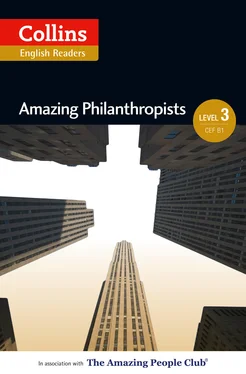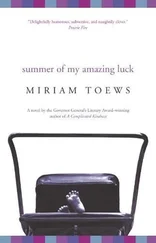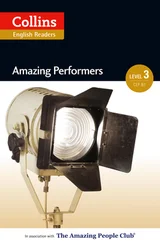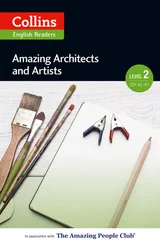My father was a great inventor, as well as a businessman. In northern Europe in those days, a lot of things were made out of wood. He invented clever new tools for making things out of wood, and created a successful business in his new Russian home. When I was nine years old, we were able to join him. My mother was very pleased that the family was back together, especially as she was going to have another baby. My brother, Emil, was born that year.
My father’s company was called Nobel & Sons. It grew into a large engineering company, making all kinds of machines, from steam engines to early central heating. The Industrial Revolution was happening in Europe at this time. Machines could now make most things that humans had made by hand for centuries.
We lived in a comfortable wooden house in St Petersburg, but we were not rich. My brothers and I were educated at home by private teachers. We studied history, science and literature. As well as Swedish, which we spoke at home, we learnt to speak Russian, French, German and English. This helped me a lot later on when I set up companies around the world.
One of my favourite subjects was literature. I especially admired the English poet Shelley, with his love of humanity and peace, and his exciting political ideas. I wrote poems myself, but I was never satisfied with them and I always burned them. I shared my father’s love of chemistry, and together we tried out new ideas. He also taught me how to be a good businessman.
When I was 17, in 1850, I left home to see some of the world. I spent a year in Paris, working with a famous French chemist. Then I went to the USA, where I studied the latest technology. Although I didn’t go to university, I received an excellent education watching some of the world’s best scientists. The long journey home to Europe across the Atlantic gave me time to think about my future. What kind of business should I try? Over the last year I had become interested in explosives, which were very basic at that time.
My family was back in Sweden by now, and I joined them there. In 1863, I successfully created a new kind of explosive, using the chemical nitroglycerin, a kind of explosive liquid. Nobel & Sons was now based in Heleneborg in Sweden, where they tested new chemical recipes.
But one terrible day, an experiment went wrong. A huge explosion at the factory killed my younger brother Emil, and several of the company workers. It was a very sad day for the family, and we had a big decision to make. Should we sell the business and stop making explosives?
We decided to continue, but I moved away from Heleneborg. I set up my own factory near Hamburg in Germany, calling it Alfred Nobel & Company. There was more bad luck, however. An enormous explosion destroyed the factory, and many of my workers were injured.
The explosives were not stable. I had to change the recipe. Nitroglycerin is very difficult to work with, and this had caused the explosions. In one experiment I added a new ingredient. The new mixture was still dangerous, but it was more stable than before. I called it ‘dynamite’.
In the next few years I started new companies in the USA and Britain, making dynamite. I first showed my new product to the world in England. I set fire to sticks of dynamite and threw packets of dynamite off a cliff. The English decision-makers did not believe my new product was safe, however. Unfortunately, there was a big explosion near Liverpool in July 1869 caused by containers of nitroglycerin. After that, companies could not use or sell nitroglycerin, or move it from one place to another in England.
I could not get permission to open a dynamite factory in England. So I went to Scotland, where some businessmen helped me to set up The British Dynamite Company in April 1871, on the west coast. The factory was at Ardeer, about 30 kilometres south of Glasgow.
Although I now had many businesses to run, I continued to make new explosives. I created a more powerful explosive called ‘gelignite’, beginning to sell it in 1876. Gelignite had lots of uses and it quickly became very popular. It was perfect for industries needing small explosions. You could use it to break up rock. Governments realized that it would be very useful during a war.
Business was good. We had more and more orders for dynamite, and it was difficult to make enough. I was making a lot of money, and in 1873, I bought a large house with big gardens in Paris. I employed a secretary there called Bertha Kinsky. I fell in love with Bertha, who was ten years younger than me. Unfortunately for me, she was already engaged to be married to a man called Baron Arthur von Suttner. After they married, I only met her again twice, but we often wrote to each other. She worked hard for world peace and she gave me a lot of advice in later years.
I was now making a fortune from sales of dynamite and gelignite around the world. I spent most of my time managing my many businesses, and life was good.
Then, one day in Paris in 1888, I had the biggest shock of my life. I picked up a newspaper and saw a headline: ‘The man who sells death is dead.’ I read the rest of the announcement. ‘Dr Alfred Nobel,’ it said, ‘has died. He became rich by finding ways to kill more people faster than ever before.’
Of course, I was not dead. In fact, my older brother Ludvig had died, and the newspaper had thought it was me. But it was not the mistake that shocked me. It was not Ludvig’s death that shocked me. It was those five words that shocked me. I was ‘the man who sells death’. In the world’s eyes, I was a killer. I was 55 years old. I asked myself many questions. What was the purpose of my life? Did I support war or peace? What should I do with my great fortune?
Those five words – ‘the man who sells death’ – changed my life forever. It took me seven years to decide what to do. During that time, I moved to San Remo in Italy, my final home. On 27 thNovember 1895, at the Swedish-Norwegian Club in Paris, I announced my decision. I put 31 million Swedish kronor (today, worth about US$265 million) into a special bank account. The money was for prizes for work that helped humanity.

The Nobel Prize medal
I chose five prizes – for Physics, Chemistry, Medicine, Literature and Peace – to be given each year. I called them the Nobel Prizes. The prize winners could be any nationality, race or religion. Each prize was a large amount of money so that the winner could continue his or her work.
Of course, the money came from dynamite, and dynamite could be used for peace or war. People could use it to help their communities, but also to kill each other. I could not change the past, however. Now I wanted to help the world to build a better future.
The first Nobel Prizes were awarded in 1901. But I did not live to see that day. I died on 10 thDecember 1896, at my home in San Remo in Italy. I was 63 years old.
The Life of Alfred Nobel
| 1833 |
|
Alfred Bernhard Nobel was born in Stockholm, Sweden, the third son of Immanuel and Andriette Nobel. Alfred’s father, Immanuel Nobel, lost all his money. He tried to start a new company in Finland. |
| 1838 |
|
Immanuel moved again, this time to St Petersburg in Russia, where he set up an engineering company. |
| 1842 |
|
When Alfred was nine, he moved with his mother Andriette and two older brothers to join his father in St Petersburg in Russia. He was taught at home with his brothers, and became interested in chemistry. |
| 1850 |
|
Alfred spent a year in Paris, working with the French chemist Professor Jules Pelouze. He also travelled in Italy and the USA, where he saw the latest technological inventions. |
| 1862 |
|
Alfred returned from the USA and joined the family firm in Sweden, starting to experiment with nitroglycerin. |
| 1863 |
|
He began to sell his new explosives. The Nobel family set up a new business at Heleneborg in Sweden, where they tested new chemical mixtures. |
| 1864 |
|
Alfred’s younger brother, Emil, was killed in an explosion, together with company workers. The family continued the business, while Alfred decided to set up his own company. He called it Nitroglycerin AB. |
| 1865 |
|
He moved to Germany and set up the Alfred Nobel & Company factory near Hamburg. An enormous explosion destroyed his factory. He made a more stable explosive, which he named ‘dynamite’. |
| 1866 |
|
He took his business to other countries, opening the United States Blasting Oil Company. |
| 1871 |
|
He started a new business called the British Dynamite Company (later known as Nobel’s Explosives Company) at Ardeer in Scotland. |
| 1873 |
|
Alfred moved to Paris, where he bought a large house and gardens, and set up another dynamite factory. |
| 1876 |
|
He created a more powerful explosive called ‘gelignite’ which sold very well. |
| 1876 |
|
He employed Bertha Kinsky von Chinic und Tettau as a secretary. He fell in love with her, but she returned to Vienna after a short time. |
| 1879 |
|
He discovered that Bertha was engaged to be married to a man called Baron Arthur von Suttner. Arthur and Bertha married. Alfred and Bertha wrote letters to each other all their lives, and Alfred always listened to Bertha’s ideas on world peace. |
| 1880 |
|
He joined his Swiss and Italian companies into one, and he continued to make a lot of money. |
| 1885 |
|
He formed a group of German explosives companies. |
| 1888 |
|
He saw a report of his own death in a Paris newspaper. It described him as ‘the man who sells death’. He saw himself through the world’s eyes and spent the next seven years thinking about his life. |
| 1891 |
|
Alfred moved to San Remo, Italy. |
| 1895 |
|
He announced his decision at the Swedish-Norwegian Club in Paris. His plan was to use most of his fortune to create five Nobel Prizes. The money still pays for the five prizes today, which are given for the best work in Physics, Chemistry, Medicine, Literature and Peace. |
| 1896 |
|
Before the award of the first Nobel Prize, Alfred Nobel died aged 63. |
| 1901 |
|
The first Nobel Prizes were awarded. They are still given every year to men and women for excellent work. |
Читать дальше













